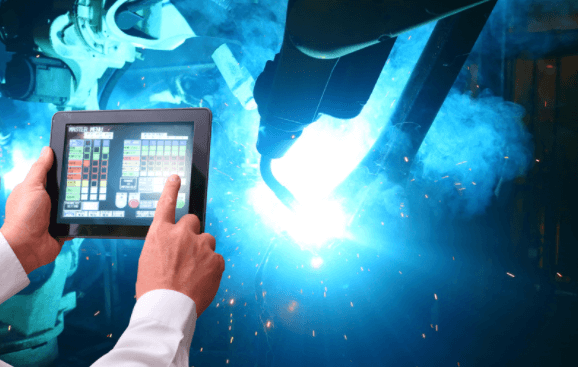This is an excerpt written by Kip Hanson in MSC Industrial, featuring Greg Giles, Executive Director of MES / Argonaut at RedViking.
CYCLE TIME VS. TAKT TIME: WHY THE DIFFERENCES MATTER
The Need for MES
Greg Giles of RedViking Engineering spends his days figuring out better ways to measure the manufacturing process, and he says that shops large and small can benefit from some kind of manufacturing execution system, or “MES.”
“Our customers are typically manufacturers that need to know how their capital investment is running,” he says. “They need to know how to improve their processes so they can be competitive in the marketplace and validate that they’re getting the most out of their investment.”
The best way to accomplish this, he says, is by installing MES systems. Unlike the Andon lights perched atop any piece of CNC equipment, an MES offers far more than a red-yellow-green view of production status. It captures information such as: the current job and part number, specific operators logged into a workstation, machine override status, fault data, elapsed cycle time, time remaining, and more. It does this for each piece of equipment on the production floor. The results can then be displayed on what is essentially a big-screen television or sent to a software program for further analysis.
“Technology like this has been used by automakers and other large manufacturers for decades,” he points out. An MES allows shops to see whether there are slowdowns or stoppages anywhere on the factory floor—and help to find out the root cause of those events.
“It gives them actionable information so they can go in and attack the problems that every manufacturer faces, each and every day,” says Giles.
Matching Up Takt Time and Cycle Time
In a perfect world, cycle time will exactly match takt time, regardless of the size of the manufacturer or its production volumes. The problem is that customer demand is rarely consistent. People buy products based on the season, availability, price and a host of other reasons, and this inevitably trickles down to the companies that manufacture those goods.Coté notes that, where volumes are larger and less sporadic, the volatility of customer demand can be averaged somewhat, providing a relatively stable takt time against which cycle times can be measured. And even in those cases where takt time becomes ambiguous—with smaller machine shops and custom manufacturers, for instance—it’s still important that companies gain a firm grip on order history, demand on the facility, people requirements, and how many components have to be machined or pieces of equipment designed and built each year.Whatever the method of calculating takt time, cycle times are equally relevant, and often more so. “In order for you to understand and then improve upon the end-to-end process, you need to know your production capabilities, whether you’re using manual labor or automated machinery,” he says. “Without this, you won’t know how to determine costs, what resources and equipment are needed, or how long it will take to deliver products. These are all key elements, and cycle time plays an extremely important role in all of them, particularly when the cycle time in one area is causing the rest of the system to bog down, or move
Being Proactive in Manufacturing Processes“It’s critical now more than ever to understand what’s going on in your processes, so you can proactively address problems and minimize production delays, rather than reacting to them after the fact,” says Greg Giles, a director at manufacturing solution provider RedViking Engineering. Here again, the two methods of measuring throughput and their relative importance to one another depends largely on the type of manufacturer, as well as who is doing the measuring. “I consider takt time as the mean time between jobs as needed to meet customer demand,” Giles explains. “I typically look at cycle time as the elapsed time from the moment that a job is available to be worked on until that job is clear of a given station or machine tool, including the time needed for load and unload.”
See how one cutting-tool manufacturer is addressing cycle time in its innovative technology. Watch: “Get a Hands-On Look at Why Sandvik PrimeTurning Reduces Cycle Time.”
To read the whole article, click here.







